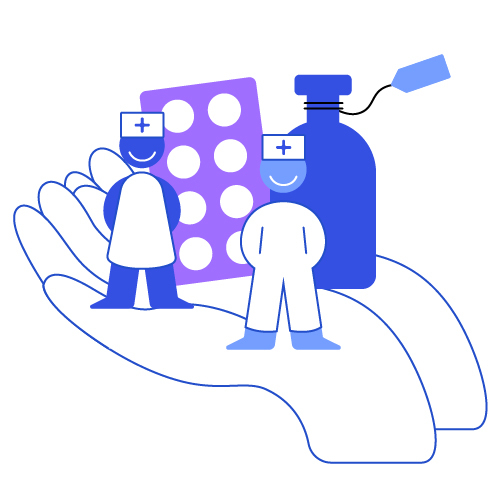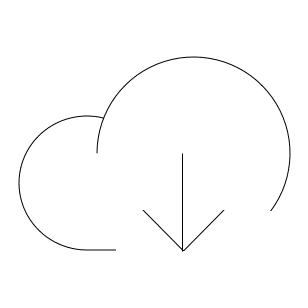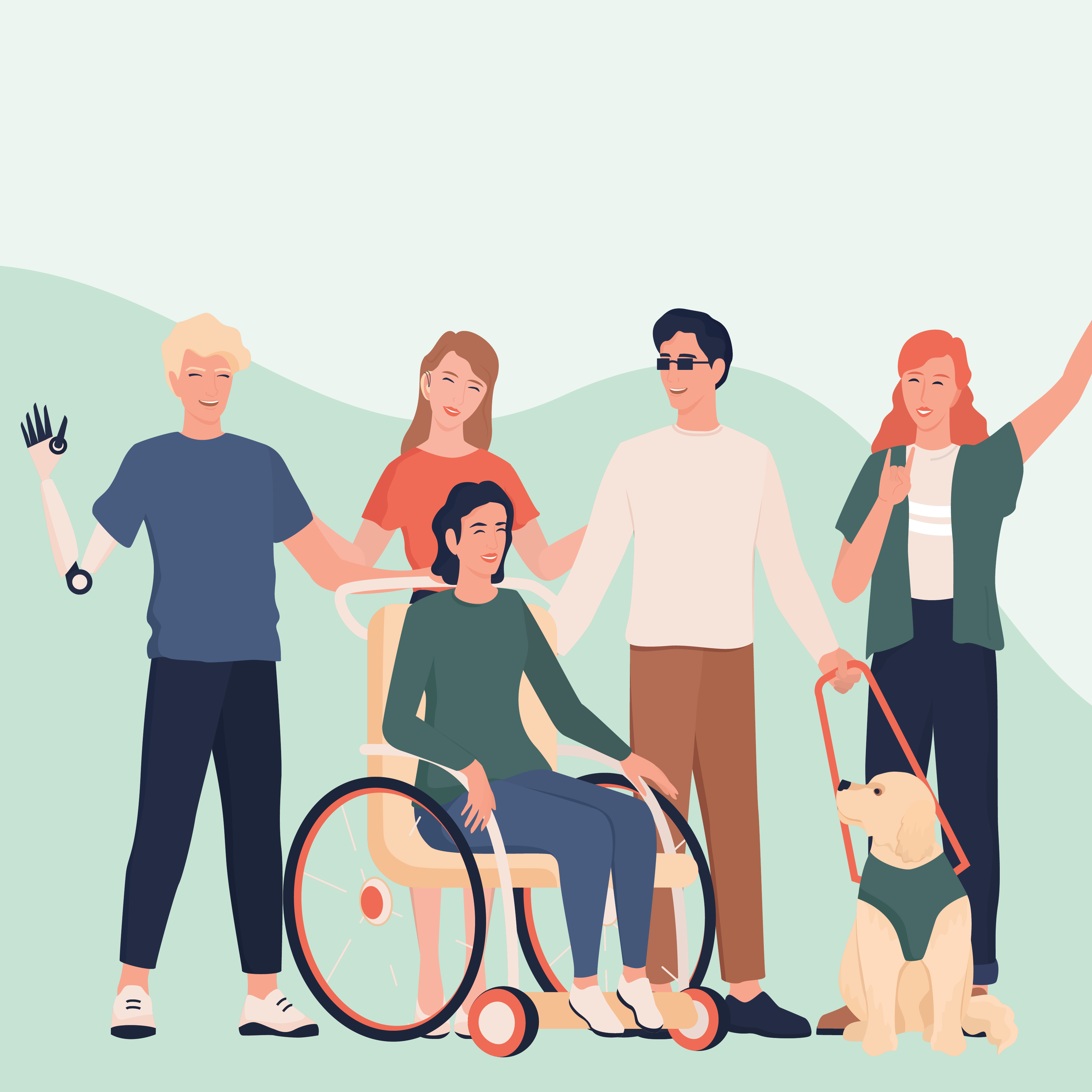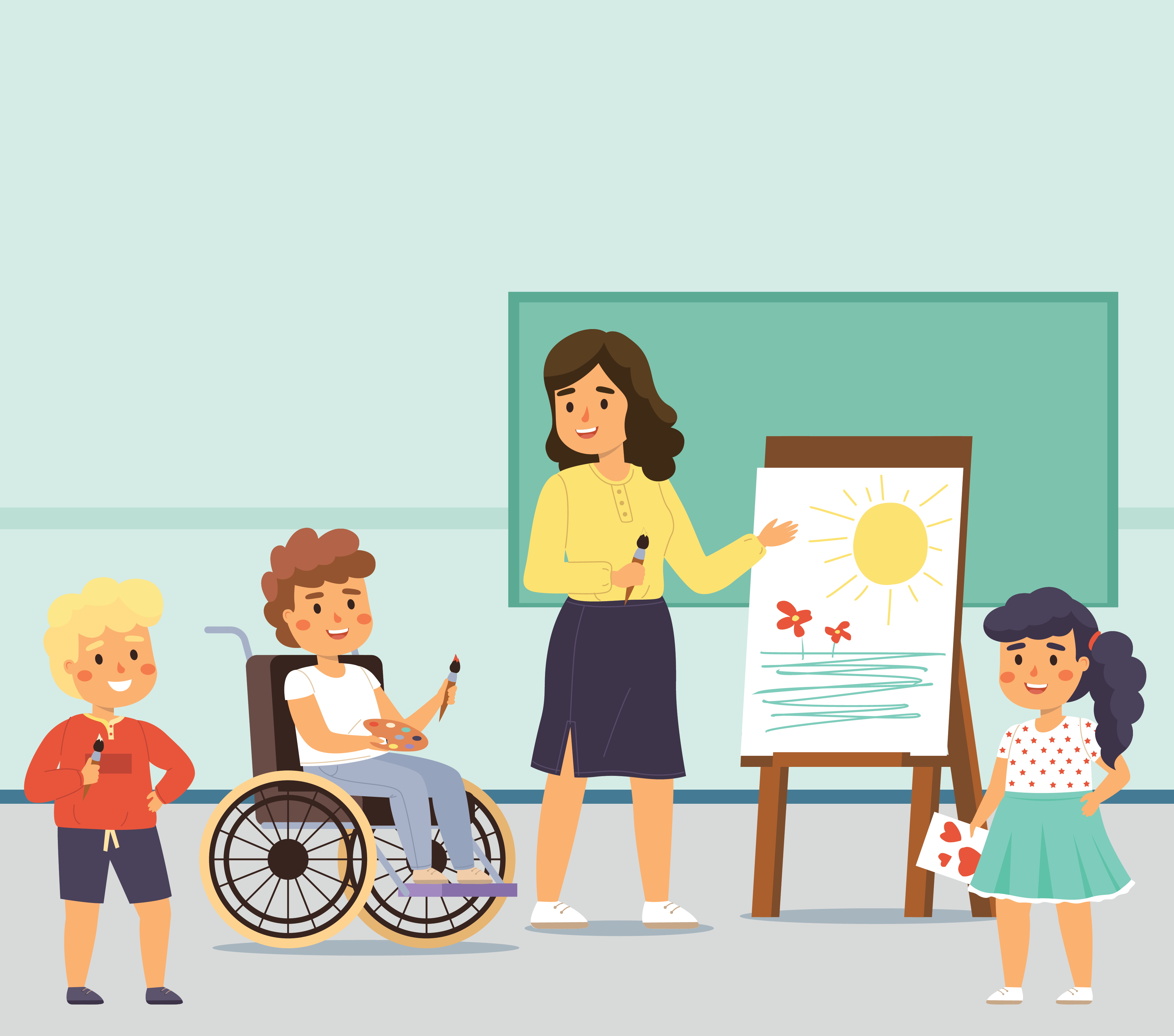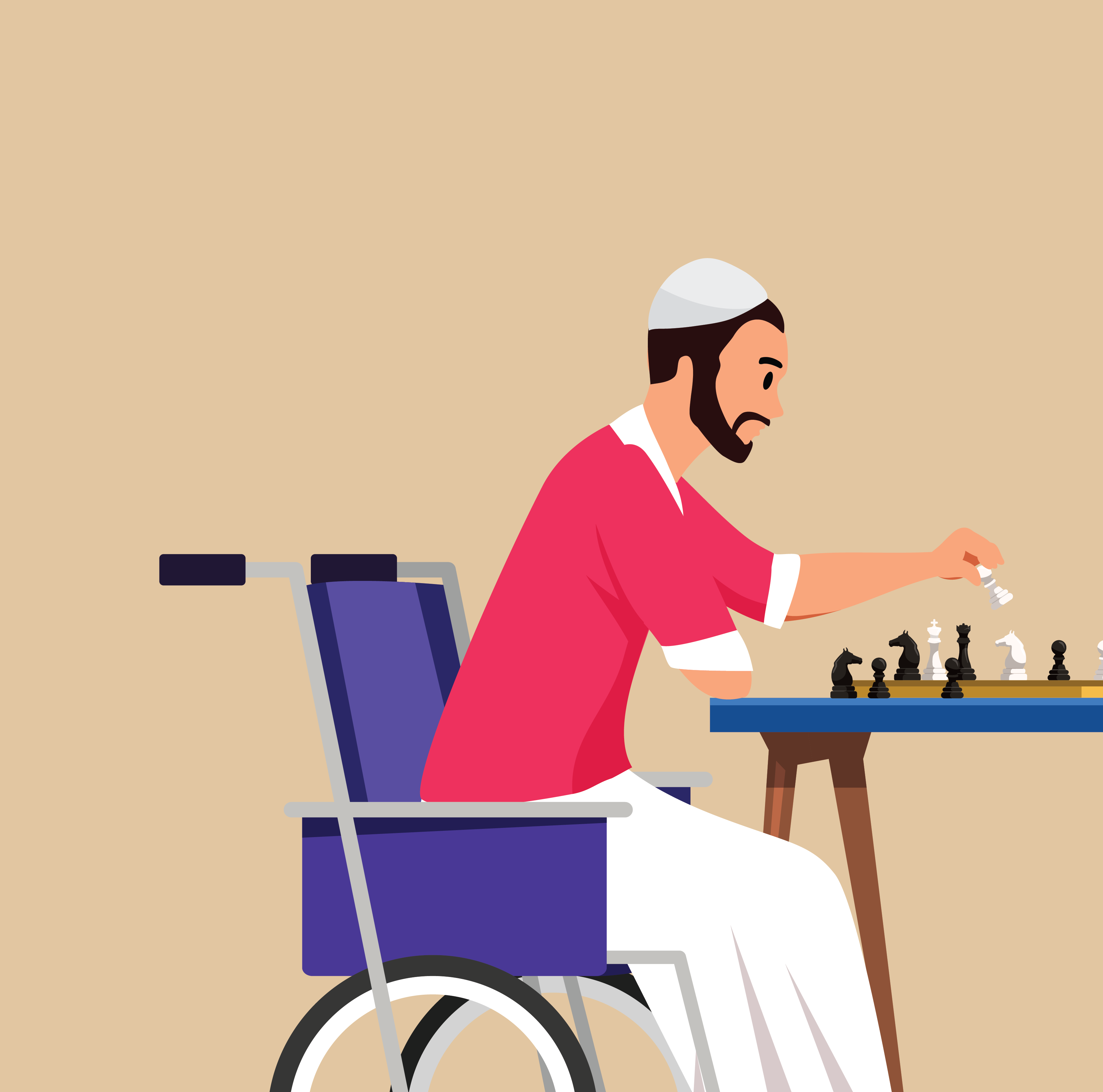Health system component | Action | Example |
Building capacity | Improving, implementing and maintaining competency frameworks and capacity development mechanisms for HR | INDIA: Building frontline worker capacity for Measles Rubella control
Health system strengthening interventions have resulted in a pool of 3,500 master trainers, building IPC capacity of 400,000 frontline workers for the Measles Rubella (MR) campaign (including routine immunization) and a budget of around $18 million. This initiative has been effective despite the ongoing pandemic and new vaccine introductions. PACIFIC ISLANDS: Improving the quality and standards of health professionals through the Pacific Open Health Learning Net (POLHN)
Established in 2003, POLHN aims to improve the quality and standard of practice of health professionals in the Pacific, through an e-learning network of academic institutions such as Fiji National University, Pacific Paramedical Training Centre and Penn Foster. POLHN provides a fully-equipped, Internet-linked network of more than 47 centres in 14 Pacific island countries, enabling health professionals to upgrade their knowledge and skills without leaving their communities. |
EUROPE AND CENTRAL ASIA: UNICEF and partners developed a training package to incorporate country-specific recommendations regarding social service workforce competencies
ECARO has developed a 3-5-year regional road map to strengthen the core competencies of the social service workforce. Activities and inputs required to achieve the proposed goals and outcomes are presented as options that governments, national academic institutions, and training and education service providers can implement with support from UNICEF.
INDIA: Integrating an interpersonal communication training module in government health systems
UNICEF India developed a Boosting Routine Immunization Demand Generation (BRIDGE) Interpersonal Communication (IPC) skills training programme endorsed by the Ministry of Health and Family Welfare. BRIDGE IPC training has been implemented across India since August 2017, using a cascading Training of Trainers model with national trainers training district trainers, who train over 1 million FLWs to address myths and misinformation on immunization. For more details, see the Communication Initiative Network’s Evaluation of BRIDGE IPC Training Programme.
|
Developing and implementing training plans for the health workforce | LAO PEOPLE’S DEMOCRATIC REPUBLIC: Scaling up the health workforce through health sector reform
A WHO WPRO report published in 2016 found fewer than 2.3 doctors, nurses and midwives per 1,000 people in Laos PDR. To address the health workforce crisis, The Health Sector Reform Framework to 2025 prioritized scaling up the health workforce. As a result of high-level commitment and advocacy, the Ministry of Home Affairs allocated 4,000 staff posts to the health sector in 2014, compared to only 1,045 in 2013. Approximately 3,000 posts were allocated to health centres and district-level facilities to improve access to health services in remote and rural areas. |
Enhancing capacity to provide people-centred care and information |
CAMBODIA: Fostering respectful care during deliveries through cross-country partnerships[1] [2] [3] (Universal Health Coverage, page 32)
A project on improving maternal and newborn care through Midwifery Capacity Development (2010-2015) led by the Cambodian Ministry of Health and the Japan International Cooperation Agency (JICA) promoted respectful care at the National Maternal and Child Health Centre (NMCHC) in Phnom Penh and the Provincial Hospital in Kampong Cham. According to a JICA survey, 77% of trained midwives encourage family members to accompany pregnant women in the delivery room; 68% encourage women to drink or eat during labour; and 86% provide support to help women find their most comfortable position during labour. Exit interviews reveal that 95% of mothers felt secure and safe during delivery.
|
Improving the availability and capacity of health workers in remote and rural areas |
JAPAN: Reducing health worker disparities (page 30)
The Ministry of Health, Labour and Welfare has been working to reduce disparities in health care access across regions with a range of strategies, such as encouraging more doctors to work in remote regions. Each prefecture offers a unique scholarship, sponsoring the education of students who commit to work at a specific facility in their home prefecture for nine years. This programme scholarship scheme has proven to be successful at increasing the healthcare workforce.
|
Strengthening human resource capacity for evidence-based policy-making | WESTERN PACIFIC: Strengthening domestic research capacity to generate evidence for policy-making (page 42)
The Ministry of Health in Viet Nam established the Health Strategy and Policy Institute in 1998, while Malaysia established the Institute for Health Systems Research in 2002. Between 1997-2002 national institutes of public health were set up in Cambodia and Lao PDR, with divisions for Health Service Development and Support and Health Systems Research. China’s National Health Development Research Centre is a national think-tank that provides technical consultancy to health policy-makers. |
Ensuring quality, human-centred programming | Training health workers to provide people-centred care, through improved interpersonal communication (IPC) | GLOBAL: Interpersonal Communication (IPC) resources
UNICEF has developed materials to support health workers to engage with respectful and culturally appropriate communication when adhering to patient needs. For example, tools produced by the Ministry of Health in Angola include manuals prepared for vaccinators and social mobilizers. INDIA: Building SBC capacity of frontline health workers and health officials on Social and Behaviour Change Communications (SBCC), and sensitizing community and faith leaders to increase routine immunization
In the state of Chhattisgarh, the Department of Health and Family Welfare (DoHFW) partnered with UNICEF SBC to develop and implement a communication strategy aimed at improving routine immunization (RI). During the project, UNICEF identified the need to target social norms that hindered the promotion of RI. Capacity-building, sensitization of community and faith leaders, and an RI drive increased demand for healthcare services in the community, improved immunization rates, built FLW capacity, created a skilled resource pool and motivated frontline workers. INDIA: Branding initiatives for health facilities
Over 1,250 public health facilities in Uttar Pradesh sought to improve utilization of health services through better service provider-client interaction and overall demand generation. The results were impressive: six out of ten clients recalled the RI messages, and 98% of clients were satisfied with staff behaviour and with interactions with doctors and service providers. More information can be found here and here. |
Developing policy and guidelines to support safe service delivery | KIRIBATI: Promoting rational use of antimicrobials(page 23)
Kiribati has aligned the Essential Medicines List to the nation’s first Antibiotic Guidelines, to guide procurement and distribution of medicines to health facilities. The Ministry of Health and Medical Services has also distributed the guidelines to health facilities in the country to ensure that antimicrobials are prescribed only when needed, in correct doses for the right duration. |
Supporting increased community participation in decision-making | NEW ZEALAND:Institutionalizing community participation in health-care decision-making
In order to recognize the principles of the Treaty of Waitangi, between Mãori and the Crown, New Zealand has institutionalized community participation in the health sector. This acknowledges the importance of the social and cultural acceptability of health services in improving health outcomes. The New Zealand Public Health and Disability Act 2000 requires that district health boards involve Mãori and other population groups in decision-making, planning and delivery of health and disability services. All district health and primary health organization boards have community representatives, including Mãori, that consult community groups on their health needs.
SAMOA: Engaging communities in health promotion, nutrition and disaster risk management
Led by the Ministry of Health, the Samoa Outreach Nutrition Pilot Project is a sector-wide initiative that aims to strengthen primary health-care services in nutrition and growth monitoring, and raise awareness of their importance at the village level. Key partners include the National Health Service and Ministry of Women, Community and Social Development (MWCSD). Supported by the Ministry of Health, the MWCSD also works with the Community Women’s Committee to organize household sanitary inspections to raise awareness of health promotion of basic hygiene and preparedness during natural disasters.
|
Developing community monitoring mechanisms | SRI LANKA: Connecting midwives with patients and the community to monitor and implement primary healthcare services
The community-based Medical Officer of Health (MOH) system brings health and health education to the front door, enabling 99% of children to receive timely, high-quality and people-centred vaccination services. As a result, positive health-seeking behaviour, good health literacy and strong public demand for high-quality, safely delivered vaccines has become commonplace. |
Empowering patients, people and communities to improve the quality and safety of health care | MALAYSIA: Developing a National Patient Safety Council to promote patient-provider partnerships
Malaysia has used several approaches to engage patients. In 2003, a national Patient Safety Council with community representatives was established. In 2014, a national Patient for Patient Safety Initiative was launched to enhance patient safety by promoting partnership between patients, health-care providers and consumers. Other efforts include Together for Safety, a national media campaign on patient safety, and a 2013 administrative order to establish patient safety committees in health facilities. ANGOLA: Building capacity for families through the ‘Happiness Recipe’
The government and UNICEF worked together to create the ‘Happiness Recipe’, a national communication strategy to promote the health, education and protection of children up to five years old. This teaches families, in particular those with pregnant women and children under five, the 12 simple behaviours to prevent and treat various problems that afflict children. SRI LANKA: Empowering mothers to advocate for better health
Mother support groups have been established at community level to advocate for essential health services, including vaccination, pre- and antenatal care, and nutrition. |
Building/maintaining transparent information systems and technologies | Creating a culture of evidence-based decision-making, influencing policy dialogues, reforms, implementation guidance, etc. | BANGLADESH: A quiet revolution in health information
Strengthening the routine health information system through the implementation of DHIS2 has connected central, divisional and district levels with sub-district health facilities and over 13,000 community clinics. Through capacity building support and positive rewards for data input and use, health workers are changing their behaviour to input, analyse and use real-time data for timely, responsive, evidence-based decision-making. FIJI: Strengthening health information systems and use of ICT page 25 Fiji has a fully-integrated system for collecting core public health data that links a unique national health number to electronic patient records. This serves as the basis for a womb-to-tomb, patient-focused, web-based medical record system supporting comprehensive continuity of care. The patient information system application is web based, with the Consolidated Monthly Returns Information System including both the public health information system and hospital maternal and child health monthly returns. KOREA: Developing the health information system and public reporting page 41
Korea has developed and implemented various health-related surveys and panel studies. The National Health Insurance claims database is one of its unique features, requiring health-care providers to report claims. As the government has increased disclosure of public information, many public databases have become accessible. This makes health information such as operational details of daycare facilities, information on hospitals, and overdue payments or state health insurance available to the public. GLOBAL: Implementing innovative dashboards for monitoring universal health coveragepage 53
National Universal Health Coverage (UHC) monitoring dashboards are being developed across the world. In Cambodia, the dashboard is based on a web-based health management information system, demographic and health surveys, and socioeconomic surveys. In the Lao PDR a dashboard will be featured in the new District Health Information System. The Philippines launched a UHC dashboard in 2013, with a core set of 19 UHC indicators to track financial risk protection, equity, service quality and coverage, and infrastructure improvements. Setting targets and visualizing progress towards UHC using the WHO Western-Pacific regional monitoring framework, core indicators and monitoring dashboards helps countries target and implement health interventions. |
Strengthening of supportive institutions, governance and leadership | Supporting the government to integrate and build capacity for demand generation for vaccination | KYRGYZ REPUBLIC: Mapping institutional needs for increasing demand for vaccination
To help mainstream demand generation in national immunization policies, programmes and budgets, UNICEF worked with Oxford Policy Management and Curatio International Foundation in 2020 to outline institutional capacity needs and areas for institutional strengthening. An operational framework assessed mainstreaming of demand generation across five areas; (i) policy and budget integration, (ii) adequate human and financial resources; (iii) supportive organisational structures with the relevant expertise and capacity is available and utilised, (iv) data-driven demand generation interventions being prioritised, targeted, and tailored effectively to reach under-immunised communities, and (v) capacity to oversee M&E. The assessment and set key recommendations for mainstreaming demand generation within national systems. |
Supporting the government to build leadership and management capacities at the sub-regional and community level | WESTERN PACIFIC:Strengthening leadership in health promotionpage 36
In 2004, The WHO Regional Office for the Western Pacific initiated ProLead, a health promotion leadership training designed to create a critical mass of health promotion leaders to advocate for global best practices and adapt them to their local context. As a result, leaders have emerged across the region and financing for health promotion has been secured. Lao PDR, Malaysia, Mongolia, Samoa, Tonga and Viet Nam have established health promotion foundations or tobacco control funds to mobilize more funding for health while reducing demand for tobacco. Samoa recently passed its Health Promotion Foundation bill while other countries continue to advocate for tobacco and alcohol taxes. INDIA: Building systems at state level through SBCC cells/centres of excellence
15 states have established SBCC cells, Centres of Excellence of Communication or Communication Resource Units to facilitate integrated planning, implementation and monitoring of social mobilization and demand generation activities. View the SOPsand the evaluation for more information on how this provides holistic support to SBC. |
Building civil society/community capacity to amplify voices and improve advocacy |
NEPAL: Instituting Platforms for adolescent participation
Strategic advocacy and collaboration between CSOs and the government has led to positive trends in support of child clubs within schools and communities as well as adolescent involvement in local governance, health and school management committees and citizens’ forums. The Child-friendly Local Governance strategy has institutionalized adolescent participation through consultations known as ‘bal bhela’. Through systematic, creative methodologies (risk-mapping, visioning), adolescents are consulted about their needs to ensure that their concerns are reflected in local municipal planning.
|
Supporting sectoral system financing for SBC actions | Ensuring sufficient funding for core public health functions | CHINA: Designing a national public health service package page19
A national public health service package developed in 2009 by the Ministry of Health, has grown to include public health interventions and primary services, resident health record management, health education, immunization, maternal and child healthcare, infectious disease reporting, NCD management and mental health management. Subnational authorities can add additional services based on their local public health needs. With funding from central and local governments, this package is provided for free at township hospitals and village health centres in rural areas and at community health centres in urban areas. |
Developing financial systems for equitable access to healthcare | Approaches to financial protection in the Western Pacific – - Health equity funds (HEF): Started in 2000 in Cambodia, and later introduced in Lao PDR, HEFs are autonomous, district-based schemes that reimburse health facilities for the cost of free care provided to poor individuals, and subsidize the cost of transportation and food. In 2014, HEFs covered 90% of poor Cambodians. The government is committed to increasing domestic funding to sustain HEF and reduce reliance on development partners.
- Subsidized insurance: China’s government subsidizes about 80% of the rural population’s health insurance premium. In Japan, central and local governments subsidize premiums for vulnerable populations, including people from low-income households and older people. The Republic of Korea has a Medical Aid programme for the poor. The Philippines subsidizes households from the poorest income quintile to enroll in the national health insurance programme. Viet Nam pays the full social health insurance premium for people below the poverty line and partial premiums for others.
- Free high-priority public health services at point of care: Lao PDR developed a national policy for free maternal and child health services for all mothers and children under five, with funding from the government and external partners. China provides a free basic health-care package to all residents.
- Publicly funded health insurance scheme: Australia’s Medicare provides access to medical and hospital services for all Australian residents and certain visitors, subsidized treatment for medical practitioners, midwives, nurse practitioners and allied health professionals, and free treatment in public hospitals. Similar mechanisms exist in New Zealand.
|
Providing financial incentives for appropriate patient behaviours | PHILIPPINES: Increasing maternal and child health service coverage page 28
The government is reducing health inequities by using targeted approaches to increase access to health services for vulnerable populations. In 2009, PhilHealth, the national social health insurance agency, started reimbursing maternal care and newborn care packages. Premiums for the poor were subsidized in an effort to increase membership. From 2008 to 2013, the proportion of births in health facilities increased from 44% to 61%. |
